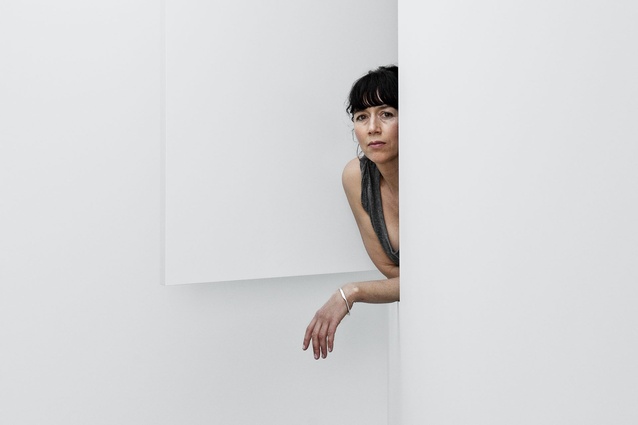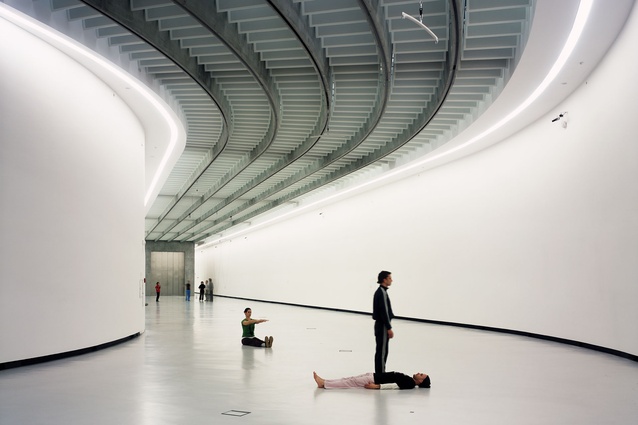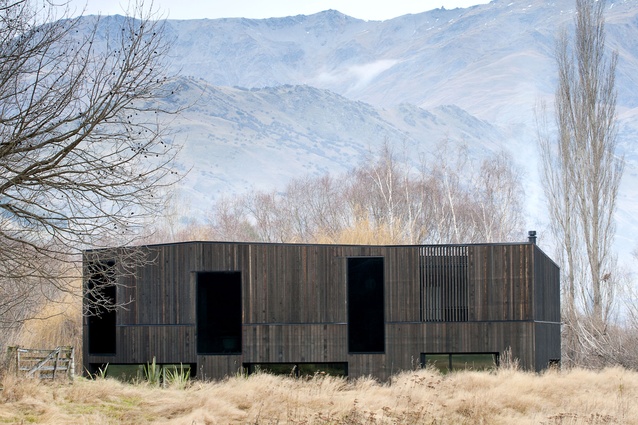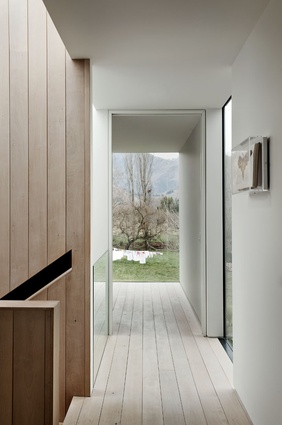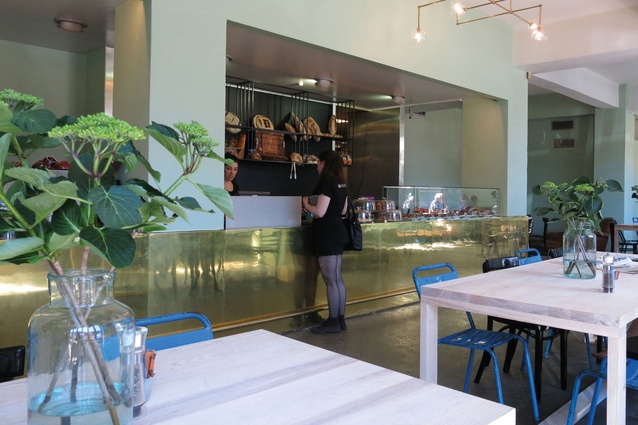Travelling on
Bergendy Cooke’s curriculum vitae reads like a who’s who of architecture. In her 20-year career, she has worked for Pritzker Prize-winning Zaha Hadid, Adjaye Associates (creators of the Museum of Contemporary Art in Denver and a Smithsonian building in Washington, D.C.) and New York’s Peter Marino Architect. Not bad for a girl who grew up in North Canterbury’s Rangiora.
Before living and working in London, New York and Barcelona, Cooke studied at the University of Auckland and was employed at Cook, Hitchcock & Sargisson (now
Cook, Sargisson & Pirie). On her return to New Zealand in 2007, she set up her own practice, bc+a, in Queenstown. The Arrowtown house she designed for her own family (husband Guy Fisher and daughters Anouk and Kiki) graces the cover of Big House, Small House, a 2012 book on contemporary dwellings in New Zealand.
Nowadays, the 45-year-old and her family again live in Barcelona, Spain, where she is working on the interior fit-out of a retail space and studio from which she and her husband are about to start a business.
Urbis: What made you want to become an architect?
Bergendy Cooke: From an early age, I was fascinated by buildings. My first built projects were for our pet mice, made out of clay from my dad’s potting room when I was about seven. My interest at the time was Corinthian temples but I’ve moved on from there.
U: You’ve worked with some heavy hitters overseas. What did Zaha Hadid teach you?
BC: That period was incredibly creative – perhaps that was due to the fact that no one spent much time out of the office and her staff members were cheap! But what it afforded was an enormous amount of time spent on investigation and research for projects. At the time I was there, there were actually only a few projects that were advancing towards being built; the others were only proposals or invited competitions. (The first project I worked on was the Rome Contemporary Arts Centre, which the office won.) But the number of models that the office produced was phenomenal. The office at that time struggled financially but what always was held in the highest regard was producing quality work at all levels, from inception to presentation. Every model was photographed and archived. Zaha taught me that, if you have integrity, vision, dedication and confidence, you will ultimately find success. At times, she was incredibly difficult to work for but I can only be impressed by her success.
U: You also worked for Peter Marino in the US. What did you learn from him?
BC: Peter Marino was quite a different story: incredibly business savvy and a chameleon in that he was able to design in any theme that was proposed. His capacity to recall detail and knowledge of materials was impressive. At one time there were more than 20 projects of various scales and styles in the office, yet he always knew exactly what was happening down to the finest detail – in some cases, down to the cutlery and salt shakers. I worked within the Chanel team while I was with him. For a year, I was part of a team that designed the Chanel flagship building in Ginza, Tokyo. I focused on the top-floor restaurant for famed chef Alain Ducasse. Typical of Marino’s work was that everything was bespoke, from wall finishes created by artisans in France to furniture upholstered with our own Chanel-inspired fabric. It was fascinating and gave me an opportunity to appreciate and fully comprehend the extent of interior design at that level.
U: How did your work change when you came home and started your own practice?
BC: New Zealand is obviously a very different environment and moving to a rural location was, in reality, the complete antithesis to the previous work environments I had been in. However, for us as a family, living in the great outdoors was a prerequisite for our return. The scope of projects while I was in New Zealand was predominantly residential and working for myself was a new experience and required me to engage in the building industry, which I had not had a lot of experience in.
U: How do you think New Zealand architecture stands up against design in more cosmopolitan countries?
BC: There are architects in New Zealand who create work of equal quality and standards to that of architects overseas and it has been refreshing to see a shift in the appreciation of good design, including architecture. There are many residential projects that have garnered not just local accolades but also international ones, which highlights the fact that New Zealand architects are producing work of international merit. We have, for a long time, had a residential vernacular that we can denote as our own, derived from local climate and building materials. We have continued to build extensively in timber, creating a language that has produced many notable buildings. However, we still do not value good design to the same extent as many European countries do and, generally, tend to value economy-driven builds, especially within the residential arena, as ‘better’. For architecture to improve, it needs to be appreciated on a greater level.
U: What are we doing here that is noteworthy?
BC: It has been refreshing to see Auckland’s waterfront change entirely from when I lived and studied there. It is something that was well overdue, yet instantly successful. Wellington City Council has shown that it does value architecture, planning and associated landscaping; this is evident in its approach to waterfront development, which has been well-conceived and rigorous with great results for the city.
U: What prompted your move to Barcelona last year?
BC: We already had a history with the city as we lived there for two years and it is where our eldest daughter, Anouk, was born. We are modern-day gypsies; never quite settled in one place. This obviously becomes more difficult with children in tow but our daughters were still young enough to make the move feasible, so we seized the opportunity. We are in the early stages of setting up a business, which is going to focus on sensory experiences, taste, smell and touch and it will extend my interests beyond architecture. I will endeavour to keep projects going in New Zealand too, as we want to maintain our connection there, but obviously site meetings become slightly more problematic and expensive! But I am designing a home in Waiheke, which we hope to have under way by October this year.
U: What’s your life like in Barcelona?
BC: The transition here has been more difficult than we envisaged and settling our daughters into school and finding a new home has all taken time. In addition, the fact that we speak Spanish at a basic level means everything is a learning process. Our day-to-day routine remains a lot like any family: getting children to school and dealing with the daily demands of life. However, here we walk or bike everywhere which I relish after having to drive everywhere in a rural environment. We live in the Born area and although it is a very popular tourist area, its scale makes it feel more like a town. As part of an old, gothic city, it is endlessly fascinating, especially from an antipodean perspective.

